
Armchair travel around the world!
Start your reading adventures with our FREE Reading Atlas.

- Around the World in 14 Books
- 7 Thrilling Book Series
- 6 Audiobooks That Are Like Theater For Your Ears


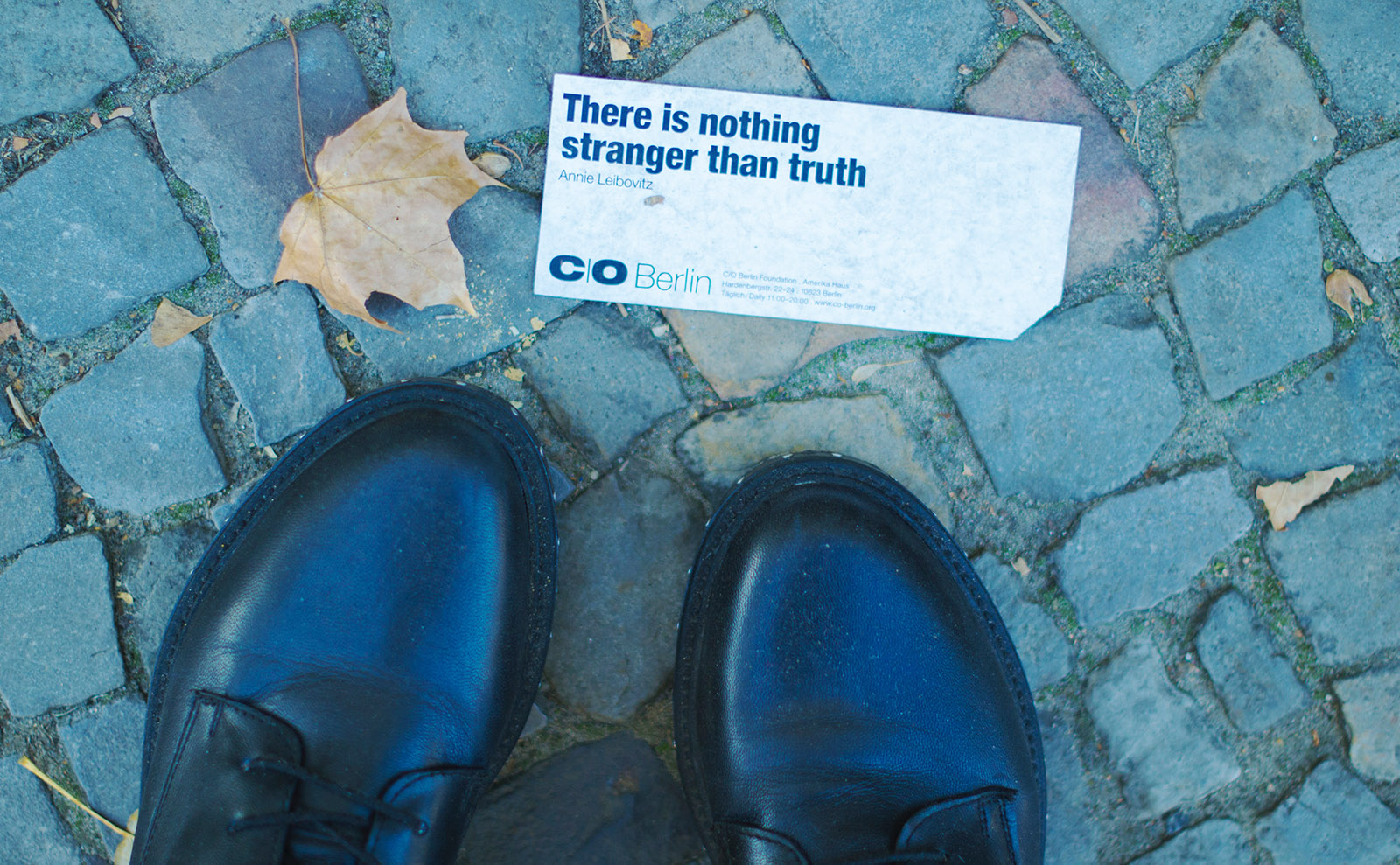
Riveting characters, can’t-look-away-plots, and settings that are vividly rendered. We love a nonfiction narrative that foists us into a story made all the more striking because it’s true.
These well-researched, compellingly written tales will take you to the heady days of turn-of-the-20th-century Chicago and the tension of mid-20th century Cuba. There are moving forays into Ireland’s and Scotland’s pasts, the searing heat of the Moroccan desert, the shocking surprises of the Andes mountains in Peru, and so many more adventures.
Buckle up! Real life is a very bumpy (and entertaining) ride.

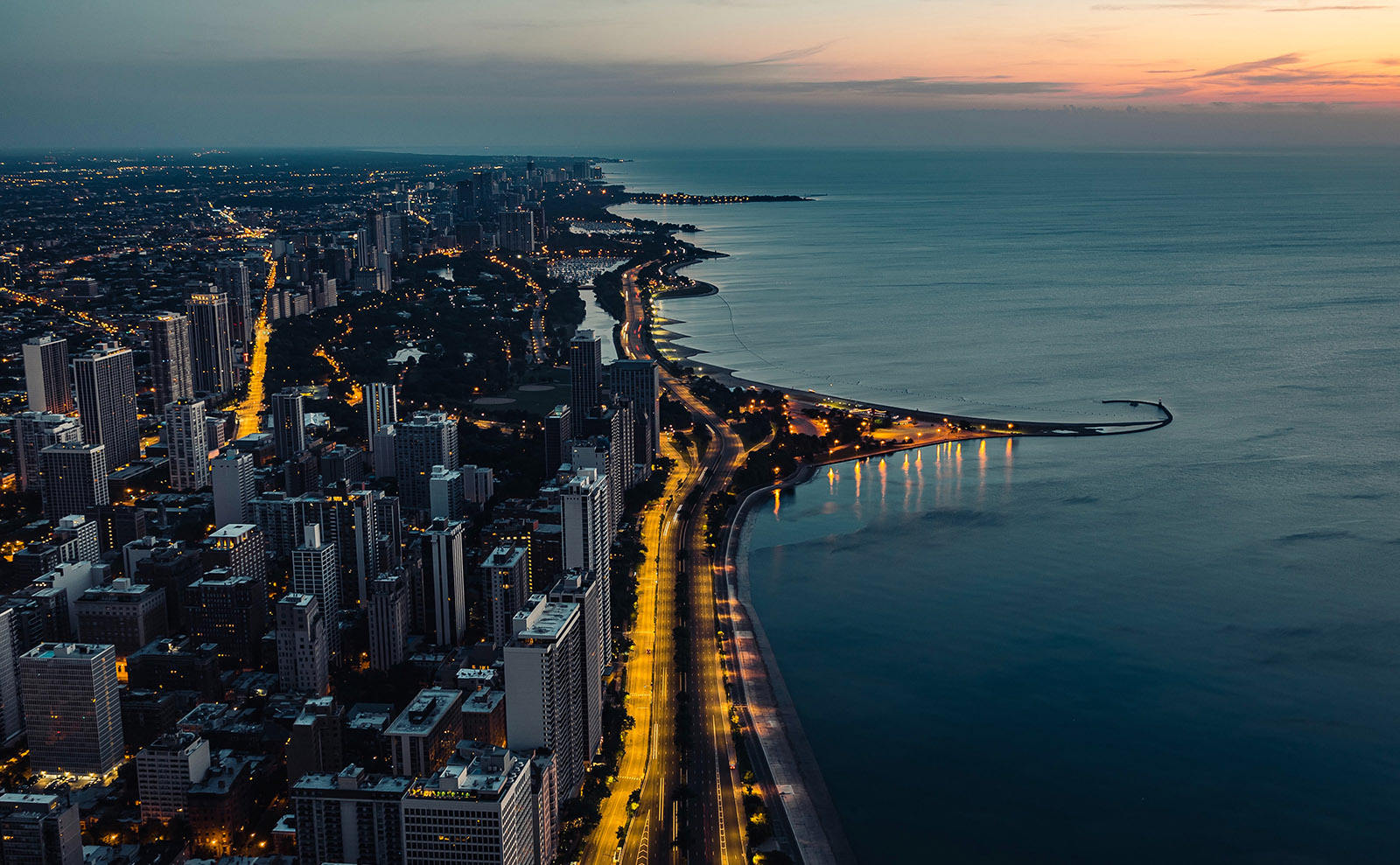
It was to be an extravaganza like the world had never seen: the 1893 Columbian Exposition, a.k.a., the Chicago’s World’s Fair. Marvels from all over the globe would be on display in a sparkling White City designed to burnish Chicago’s reputation and establish it as the country’s premier place to be.
But on the way to opening day on 1 May 1893, the fates of two men became irrevocably linked: Daniel H. Burnham, the visionary, ambitious architect behind the Fair’s construction; and H.H. Holmes, America’s first serial killer.
In this gripping narrative — you’ll need to keep reminding yourself it’s nonfiction — Erik Larson has built a time machine that will whisk you back to those heady turn-of-the-century days. By weaving the stories of these two remarkable characters, the entire scope of the Fair is revealed: its optimism, innovation, spectacle, and the high stakes involved in its success.
With an unerring eye for just the right details, Erik Larson brings both Burnham and Holmes vividly to life in this unforgettable story of ambition, crime, and American ingenuity. {more}
Chicago’s population had topped one million for the first time, making the city the second most populous in the nation after New York, although disgruntled residents of Philadelphia, previously in second place, were quick to point out that Chicago had cheated by annexing large expanses of land just in time for the 1890 decadal census. Chicago shrugged the sniping off. Big was big. Success today would dispel at last the eastern perception that Chicago was nothing more than a greedy, hog-slaughtering backwater; failure would bring humiliation from which the city would not soon recover, given how heartily its leading men had boasted that Chicago would prevail. It was this big talk, not the persistent southwesterly breeze, that had prompted New York editor Charles Anderson Dana to nickname Chicago ‘the Windy City.’ — Erik Larson
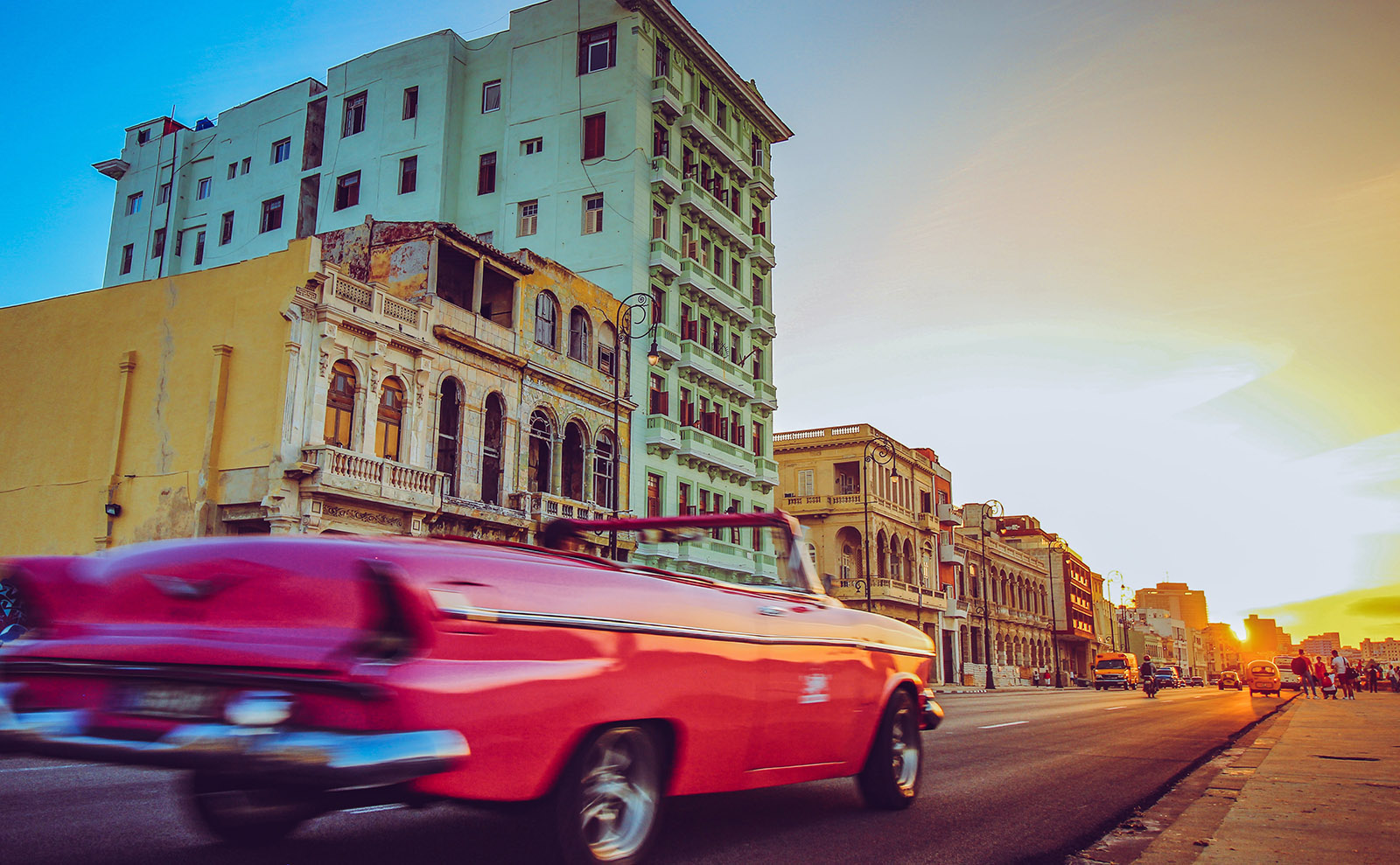
This mashup of literary memoir and investigative reporting is as satisfying as a just-mixed cuba libre: fizzy, not-too-sweet, and intoxicating — with a kick. Through photo-journalist David Ariosto’s eyes, we get a peek at the real Cuba, an island that’s as tough as it is colorful and alluring.
In 2009, the CNN reporter landed a plum two-year assignment in Havana. His narrative begins as an amusing fish-out-of-water story: There’s no A/C to be had in his residence, and his sink is stolen during a plumbing repair. Simple tasks like shopping for groceries or light bulbs or a spark plug for his scooter take on epic proportions.
But the story evolves over his nine-year stay into an astute report — with compelling first-hand insight — on what life is like in Cuba now. Ariosto introduces us to the larger-than-life characters that populate his world, including an unforgettable media mogul known for his skills pirating films and music, and a Cuban woman now happily living in the US who also misses the simpler freedoms of her homeland. {more}
I sipped an amber rum. Habana Club. Seven years. No ice. He palmed a Bucanero beer, half wrapped in a flimsy white paper napkin. Curls of Cohiba smoke wafted between us, giving the room a translucent look and an acrid taste. Castro was having a drink. And so was I. It was a Friday evening in late November 2010, and we were ensconced on opposite ends of a small subterranean saloon on the western outskirts of Havana. It was my last night in Cuba. — David Ariosto
Forget action movies. This almost hour-by-hour account of the Cuban missile crisis in 1962 is a white-knuckle thrill ride through one of the most dramatic events of the Cold War. Told in gripping, human-level detail, Michael Dobbs’ account puts you in the rooms where it happened.
At the height of post-WWII tension between the Soviet Union and the United States, the USSR placed nuclear missiles on its island ally Cuba, a scant 100 or so miles off the southern coast of Florida.
What follows is the stuff of spy thrillers and slapstick comedy — were it not for the exceptionally high stakes at play — including a plot to destroy the US naval base at Guantánamo, an accidental fly-over of Soviet territory by an American spy plane, and urgent messages delivered by telegram and bicycle. For thirteen days, these two countries were on the verge of a full-out nuclear war.
With a brisk tempo and scene-setting detail, Dobbs turns the spotlight on the big names of the story and the behind-the-scenes players who could have changed the course of history with the press of a single button. {more}
The Cuban missile crisis was a global event, unfolding simultaneously across twenty-four different time zones. The action takes place in many different locales, mainly Washington, Moscow, and Cuba… The plot of the story is simple enough: two men, one in Washington, one in Moscow, struggle with the specter of nuclear destruction they themselves have unleashed. But is it the subplots that give the story its drama. If seemingly minor characters sometimes threaten to take over the narrative, it is worth remembering that any one of these subplots could have become the main plot at any time. The issue was not whether Kennedy and Khrushchev wanted to control events; it was whether they could. — Michael Dobbs
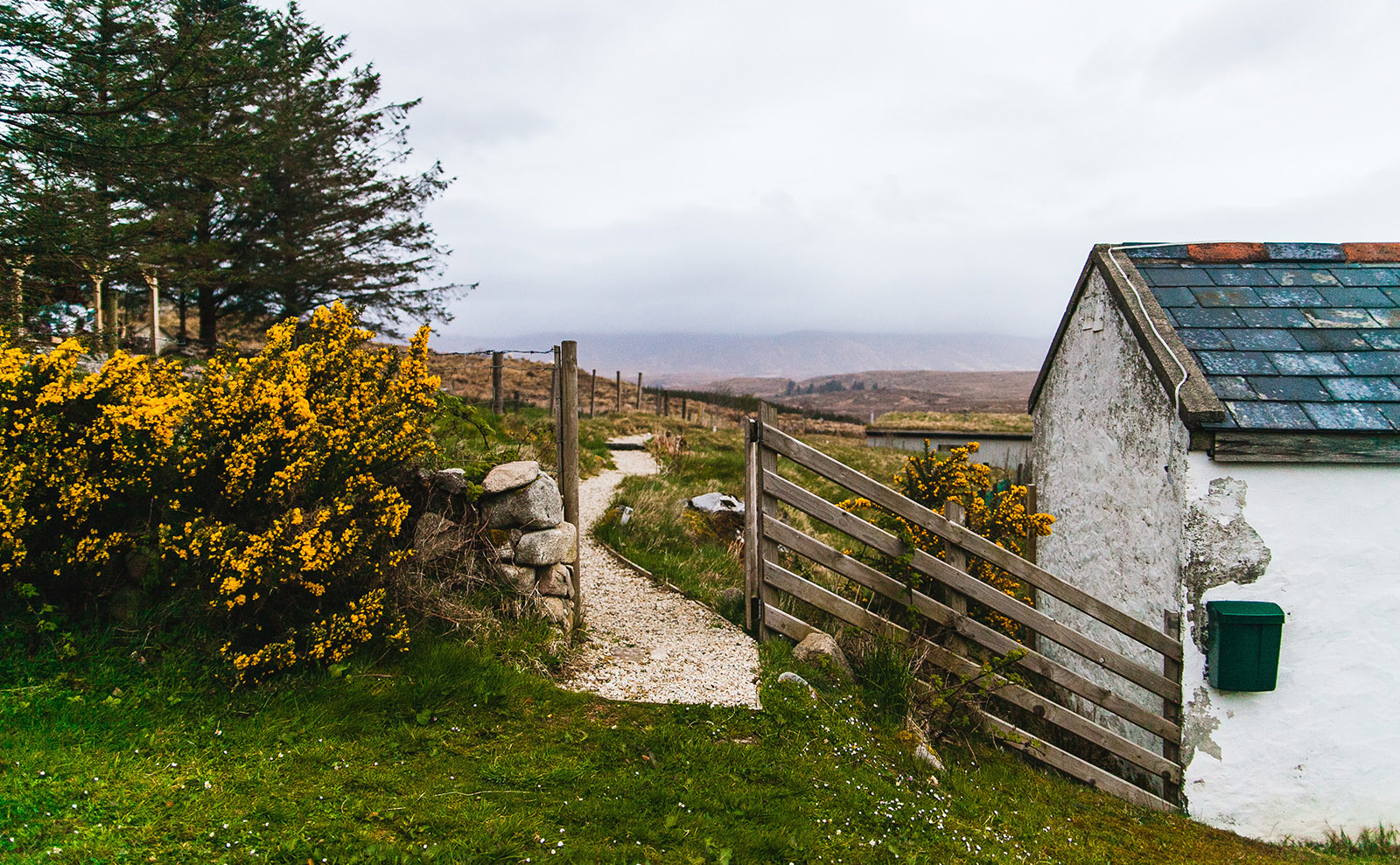
Get ready for a raucous romp through history with one of the most colorful and remarkable Irishmen of the 19th century. Meet Thomas Francis Meagher, an unforgettable character who also possessed a great deal of character.
Engage even a little bit with world history, and one of the themes that will emerge almost immediately is colonization. This deeply researched and precisely written book makes something abundantly clear: The English began their long and problematic habit of colonization with the people closest to them, the Irish.
Onto this fractured and messy historical stage strode our hero. The son of a wealthy man, Thomas is smart, eloquent, and a gifted writer. He’s an idealist and a romantic and a troublemaker. He’s also hungry, thanks to the Irish potato famine — and soon after that, he was radicalized.
Meagher’s middle name should have been ‘adventure’ because his real-life escapades are amazing. Egan takes us along on Meagher’s exploits, so we experience the breadth of the Irishman’s life and influence, both in his native land and his adopted home of the US. Detailed, entertaining, and inspiring, this 200-year-old story feels both intimate and fresh. {more}
For the better part of seven centuries, to be Irish in Ireland was to live in a land not your own. You called a lake next to your family home by one name, and the occupiers gave it another. You knew a town had been built by the hands of your ancestors, the quarry of origin for the stones pressed into those streets, and you were forbidden from inhabiting it. You could not enter a court of law as anything but a criminal or a snitch. You could not worship your God, in a church open to the public, without risking prison or public flogging. You could not attend school, at any level, even at home. And if your parents sent you out of the country to be educated, you could not return. You could not marry, conduct trade or go into business with a Christian Protestant. You could not have a foster child. If orphaned, you were forced into a home full of people who rejected your faith. You could not play your favorite sports – hurling was specifically prohibited. You could not own land in more than 80 percent of your country; the bogs, barrens and highlands were your haunts. You could not own a horse worth more than five pounds sterling. If you married an Englishman, you would lose everything upon his death. You could not speak your language outside your home. You would not think in Irish, so the logic went, if you were not allowed to speak in Irish. — Timothy Egan
To understand Ireland – beyond its convivial pub life, lilting language, and literary tradition — you need to understand The Troubles. For the thirty years between 1968 and 1998, Belfast was the epicenter of a violent conflict that radiated throughout Northern Ireland, the UK, and across the Atlantic.
At its heart, this is the tale of Jean McConville, a 38-year-old mother of ten, who was dragged from her home in Belfast in 1972. Masked intruders ripped her away from her children, and she was never seen again. Her crime: She was a Protestant who married a Catholic and was suspected of being an informant.
New Yorker staff writer Patrick Radden Keefe transports us directly to 1970s Belfast and does the hard work of telling a larger story by focusing on this one event: who was there, what happened, and why. The story unfolds like a novel with real-life figures as its characters. We follow along as mild mischief-makers evolve into full-blown terrorists (or revolutionaries, depending on your point of view) who keep notes in their diaries about car bombs and kidnappings.
Keefe delivers a true-to-life murder mystery with significant political interest, centered on a fascinating and dangerous time in history; it’s a marvel of journalism and storytelling. {more}
Much of the Irish landscape is dominated by peat bogs; the anaerobic and acidic conditions in the densely packed earth mean that the past in Ireland can be subject to macabre resurrection. Peat cutters occasionally churn up ancient mandibles, clavicles, or entire cadavers that have been preserved for millennia. The bodies date as far back as the Bronze Age, and often show signs of ritual sacrifice and violent death. These victims, cast out of their communities and buried, have surfaced vividly intact, from their hair to their leathery skin. The poet Seamus Heaney, who harvested peat as a boy on his family’s farm, once described the bogs of Ireland as ‘a landscape that remembered everything that had happened in and to it.’ — Patrick Radden Keefe

In 1815, 12 American sailors were shipwrecked off the coast of Africa, captured by desert nomads, and sold into slavery. With their unfriendly captors, they traveled for two months in the debilitating heat and dire conditions of the Sahara desert.
The journey started uneventfully enough. Captain James Riley and the crew of the Commerce set out from Connecticut on calm seas for New Orleans. The plan was to trade their cargo of hay and bricks for tobacco and flour that they’d take on to Gibraltar. The return trip would be a cargo of salt to take back to New England.
But the ship got hung up on a rocky outcropping just off the shore of Morocco. The men were robbed, captured, starved, and pushed to the limits of their humanity.
Author Dean King unspools their story in devastating and tangible detail: the blistering heat of the sun and sand, the scorpions and the slavers, the thirst, the hunger, the despair. It’s the definition of swashbuckling adventure, brotherhood, and courage. {more}
What they could use and carry from a shipwreck, the Sahrawis took. What they could not take, it was their custom to burn. To the victims who witnessed this destruction of their personal articles and the cargo of their vessel, it was often the last cruel blow before they assumed the life of a slave to some of the poorest people on Earth, living in some of the harshest conditions imaginable. — Dean King
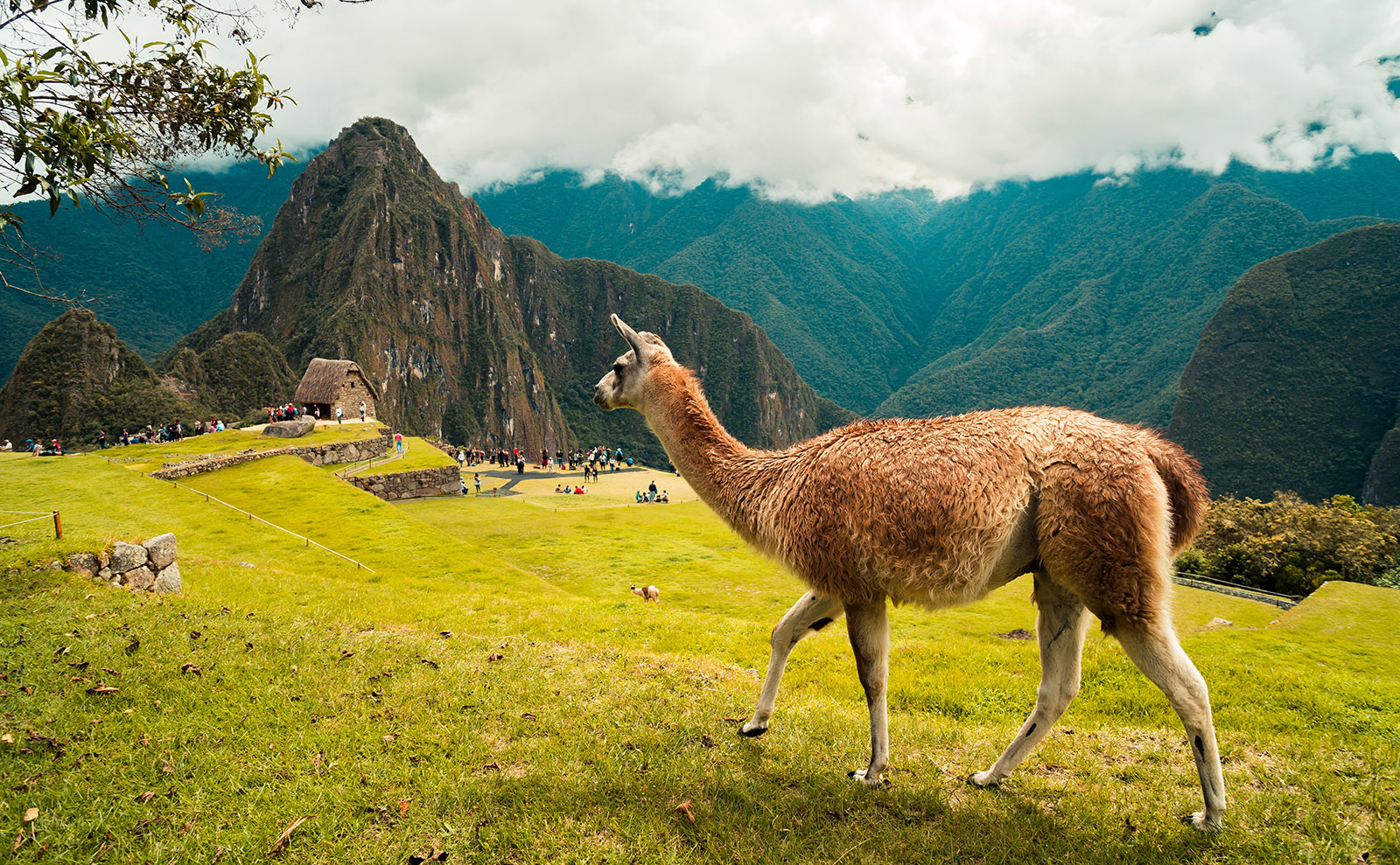
Mark Adams was a successful editor for National Geographic Adventure Magazine, spending his days at a desk, writing about thrilling excursions but not taking them himself. Then one day, he decided he needed an adventure, and he set out to retrace the steps of Hiram Bingham, who introduced Machu Picchu to the rest of the world in 1911.
Adams’ trek took him over 100 miles on foot through some of the most beautiful and challenging terrain on the Earth. He was joined on his journey by 60-something, vastly experienced Australian explorer John Leivers, a real-life mash-up of Indiana Jones and Crocodile Dundee. This unlikely duo hires a crew of porters and llamas and a cook, then they set out to conquer the Andes.
Personal, informative, and suspenseful, this book is an exploration of Peru and its customs, history, politics, and food, as well as the story of a man who found himself by running away to the Andes. {more}
On a globe it looks like a swollen California. Within that space, though, are twenty-thousand-foot peaks, the world’s deepest canyon (twice as deep as the Grand Canyon), unmapped Amazon jungle, and the driest desert on Earth. — Mark Adams
Andrés Ruzo’s grandfather had told him the legend of the boiling river in the rainforest of Peru. But when he asked his professors if a boiling river in the Amazon was possible, they unequivocally answered, ‘No.’ So he set out on an adventure to prove them wrong.
Buckle up for a geothermal thriller that combines enthralling adventure mixed and exciting scientific study. At the heart of the story is Ruzo, a geoscientist who became fascinated by stories of powerful shamans, silent warriors with poisoned arrows, spiders big enough to eat birds, and snakes that swallowed men whole, and a river that boiled.
With a shaman as his guide and mentor, Ruzo navigates obstacles of the plant, animal, and human world to find the boiling waters so hot that locals brew tea in the river. On his quest, he meets cattle farmers and loggers, runs afoul of government interests and political concerns, enjoys once-in-a-lifetime experiences, and walks along paths that have intrigued people for hundreds of years. {more}
I am standing on a rock in the middle of a river. Nighttime in the jungle pours around me. Instinctively, I reach up and turn off my headlamp. The blackness is complete now, and I pause, waiting. I had missed the darkness. I breathe in. The air is thick and abnormally hot, even for the Amazon. As my eyes adjust to the dark, the outline of the jungle slowly distinguishes itself from the night: blacks, grays, dark blues, even silvery whites. It’s amazing what we miss when the lights are on. The moon is hardly a sliver, and innumerable stars dominate the sky above, illuminating the vast jungle and bathing each leaf and rock with their soft light. All around me, vapors rise like ghosts in the starlight. Some are thin streams of mist; others are clouds so large that their billowing appears to be in slow motion. I lie down on the rock and am still, watching the steam rise into the night. — Andrés Ruzo
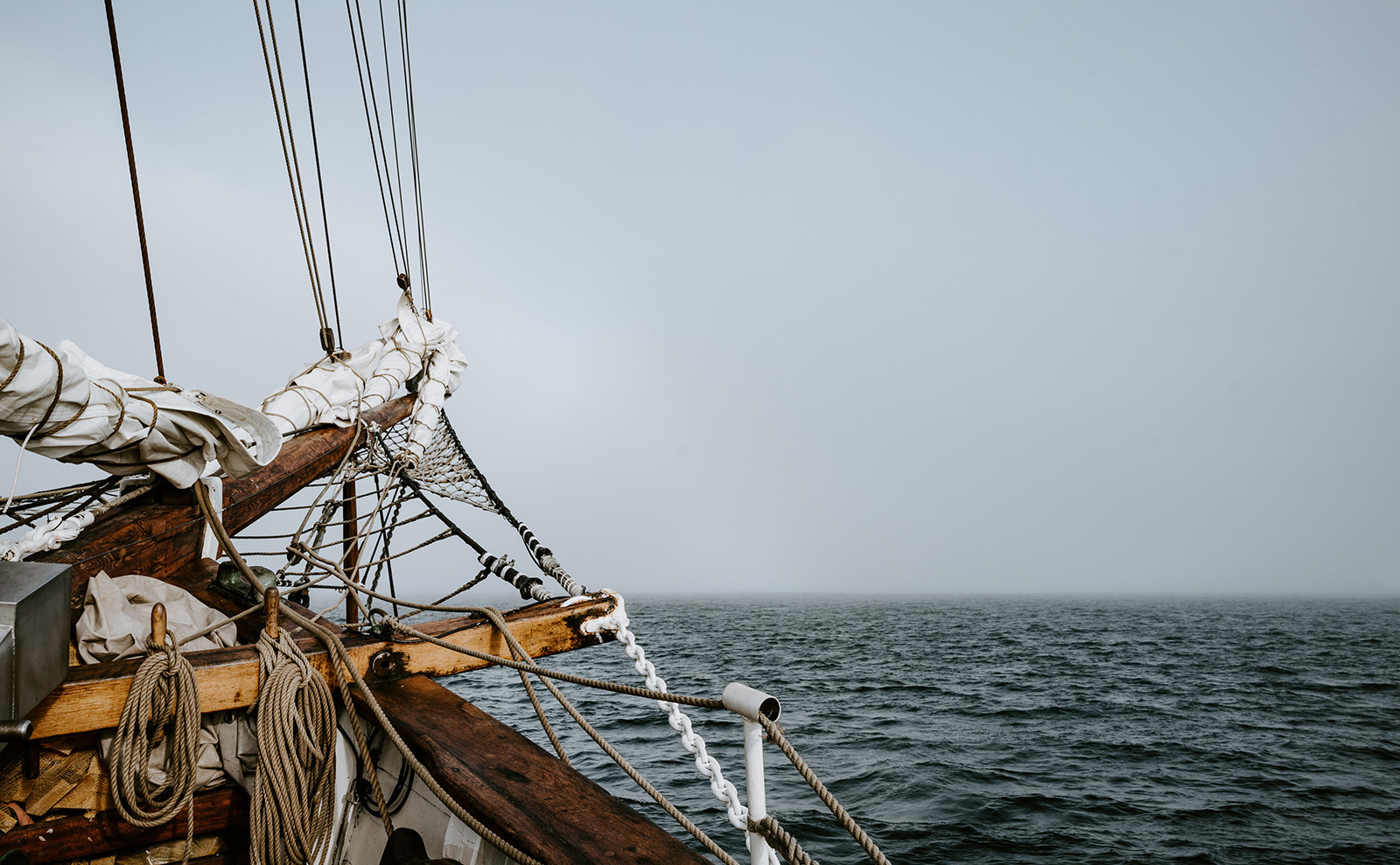
You probably remember the name of the ship Lusitania from history class, but in Dead Wake, Eric Larson works his exceptional brand of storytelling magic to illuminate new facts — and suddenly, you are right on that ship.
In 1915, there wasn’t a luxury liner tougher or faster than the Lusitania, and she was crossing from New York to Liverpool with a record number of souls aboard. The world was in the throes of WWI, but Captain William Thomas Turner had confidence in his ship’s abilities — and faith in the gentlemanly rules of warfare that had protected civilian vessels throughout his career.
But then a number of elements, ‘myriad factors, large and achingly small’ — hubris, ambition, politics, fog, and deadly secrets — converged to produce a great tragedy.
With his unerring eye for the most moving and relevant details, Larson makes real people of everyone involved, from the passengers on board the fated ship to the behind-the-scenes players in British intelligence, on German U-Boats, and at the White House. Awash in glamour and unrelenting suspense — even though we know the sad truth of the events — this book is gripping from the ship’s promising beginning to its tragic end. {more}
There were parents sailing to rejoin their children, and children to rejoin their parents, and wives and fathers hoping to get back to their own families, as was the case with Mrs. Arthur Luck of Worcester, Massachusetts, traveling with her two sons, Kenneth Luck and Elbridge Luck, ages eight and nine, to rejoin her husband, a mining engineer who awaited them in England. Why in the midst of great events there always seems to be a family so misnamed is one of the imponderables of history. — Erik Larson
In the fall of 2015, Hurricane Joaquin crashed into the Bahamas and devoured two cargo vessels: the American El Faro with a crew of 33 souls aboard and the Haitian Minouche, a smaller, older freighter served by a dozen sailors. Both ships and the entire crew of the El Faro were lost to the sea.
This is the well-told true story of those doomed ships, the brave Coast Guard swimmers who executed the search-and-rescue operation, and the human foibles that drove the vessels into the hurricane’s destructive path.
Using extensive interviews and the ships’ Voyage Data Recorders, veteran journalist Tristram Korten leads us through the actions and decisions made by the captains of both freighters. His narrative explores the ships — the 790-foot El Faro and the much smaller 230-foot freighter Minouche — from stem to stern, helping us understand the disparate and increasingly desperate crew members.
The parallel and contrasting stories of these ships is a page-turner — a respectful, sobering, and suspenseful examination of one of the largest US maritime disasters. {more}
Many of the men, in a very Haitian way, were already accepting their fate as God’s will, and were asking their mates to deliver messages of love to their families if they happened to survive. Gelera, whose religious devotion would be hard to match, also trusted that whatever happened would be God’s will. But he couldn’t resign himself to doom for a simple reason: He was responsible for everyone on his ship. It was his duty as captain to keep them alive, and it would be his legacy if they perished. This, perhaps, was an even greater motivating force than his own survival. A captain who lost his crew would leave a stained memory on this earth. — Tristram Korten
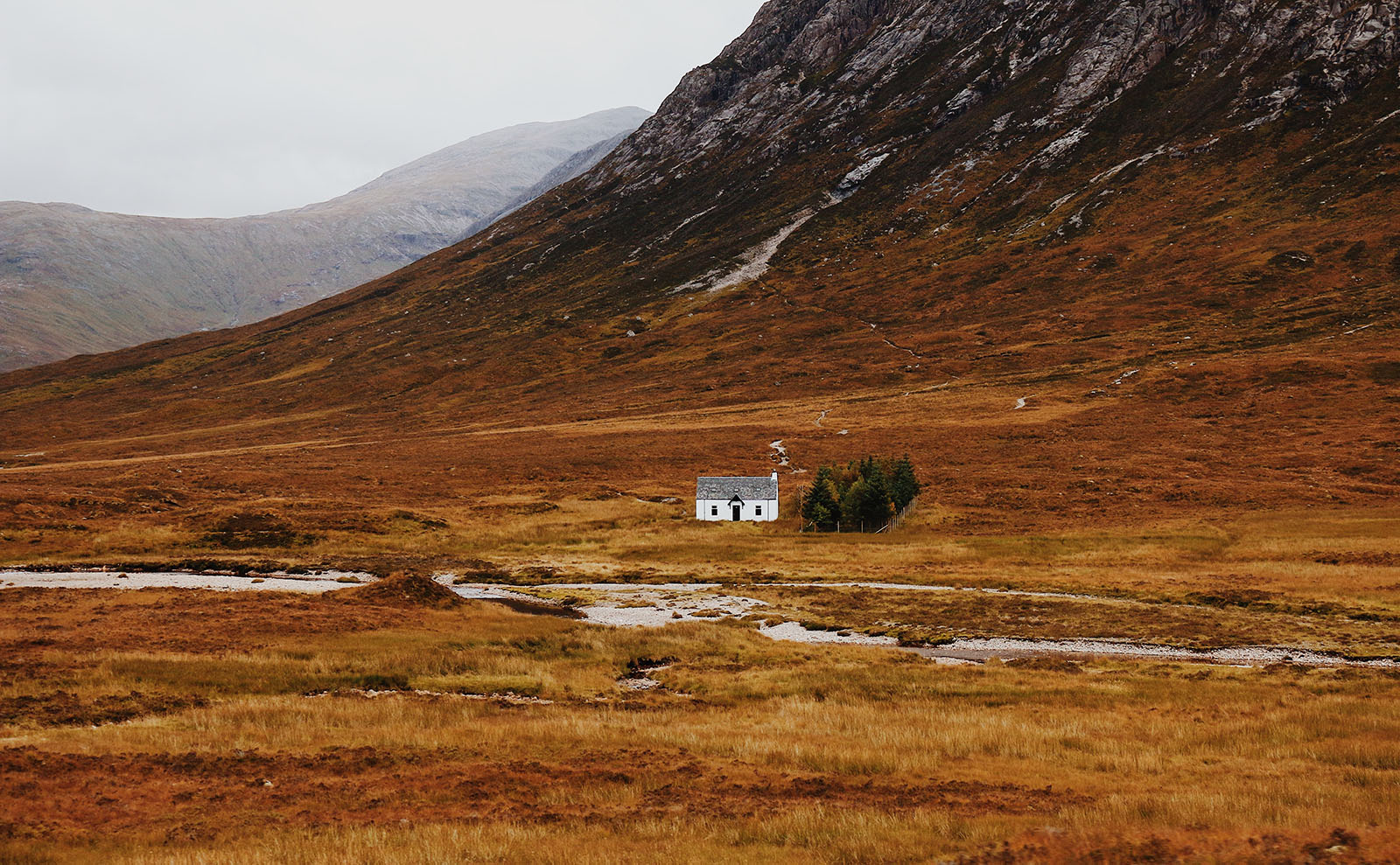
In this vivid memoir, American writer John McPhee turns his eyes and his pen to the small island of Colonsay in the Hebrides, off the west coast of Scotland. The island — still grappling with the feudal system of lords and farmers — is seventeen square miles of damp, descendants, and drama.
John McPhee is a son of the Colonsay McPhees, a family that lived on the island for centuries until they were run out by the MacDonalds. In 1969, curious about his ancestry and the Hebridean way of life, he packed up his family and went to live for a year among the 138 people who still work the land on this wind-battered island.
It’s a small town like any other — and drastically different than anything that might seem familiar. Separated from the mainland by geography and custom, it’s an incubator for grudges, gossip, and an undeniable dependency on each other. McPhee has an ear for dialogue — you’ll hear the brogue — and his gift for description means you’ll also smell the salt air and feel the bite of the wind as you peek behind the curtains of the islanders’ parlors. {more}
Colonsay is less like a small town than like a large lifeboat. By a scale of things that begins with cities and runs to hamlets, the island is some distance off the end. The usual frictions, gossip, and intense social espionage that characterize life in a small town are so grandly magnified on Colonsay that they sometimes appear in surprising form, in the way that patches of skin magnified a hundred diameters may appear to be landscapes of the moon. Air and water, sea and sky, life is imploded upon the people here by the blue bottles that surround them. Everyone is many things to everyone else and is encountered daily in a dozen guises. Enmeshed together, the people of the island become one another. Friend and enemy dwell in the same skin… Where I come from, a few angry words at a party can separate people for all time, but no amount of enmity could do that on Colonsay, where the sea is close in four directions and where vehicles meet and pass on a road that is eight feet wide. — John McPhee

The story begins in 1802 when a Vietnamese war hero is awarded a vast plot of land in North Vietnam in honor of his service. He becomes a feudal lord, complete with a manor house and thousands of peasants to serve him. For five generations, each of the male heirs in his line of succession becomes a bit wealthier than the last.
Until we get to the subject of this book: Thong Pham. His destiny follows a dramatically different path.
Through lyrical prose that uses novelistic tricks to draw us into the historical facts, we trace the events — challenging, tragic, heroic — in this man’s life. He is, by turns and simultaneously, a playboy, an opium addict, a restauranteur, a teacher, a father. A good man in many bad circumstances.
The story unfolds through chapters that alternate between the events of the past and those closer to the present. This uniquely lived and told story of Thong Pham’s life reads like a historical fantasy that washed up on the shores of 20th-century Vietnam. It’s affecting, personal, and unforgettable. {more}
[Cha ca is] a northern delicacy we were unlikely to encounter in the South. A waiter brought us two platters of raw sea bass filleted paper-thin and heaps of fresh lettuce, vegetables, pickles, cucumbers, and herbs. The cook followed with a sizzling pan of turmeric and garlic oil. He cooked the fish by pouring the hot oil directly on it… We chopsticked pieces of fish onto sesame crackers and topped them with basil, cilantro, lettuce, purple herbs, and a dab of an ash-coloured sauce made with fermented fish, fish sauce, chili, lime, and garlic. We quenched ourselves with litres of icy beer. — Andrew X. Pham
With elegant, watercolor-washed ink illustrations and poignantly honest emotional beats, this memoir tells the story of one family’s journey from war-torn Vietnam to the United States.
The story begins in a maternity ward: a woman is giving birth to her son while her mother waits in the next room, reflecting on the impending birth of her grandson. It should be a joyous occasion. Instead, it’s marked by complicated emotions. And this book sets out to answer questions raised by this setup: Why is the grandmother the way she is? What effect does that have on the rest of the family?
We see their nighttime escape from Vietnam on a boat. Their arrival in Malaysia with almost nothing. Their emigration to the US, the country that recently — brutally — bombed their homeland.
During their dangerous, heart-rending adventures, this book does three things exceedingly well. First, it vividly evokes what it was like to be a Vietnamese person trapped in the ravages of the seemingly endless conflicts of the 20th century. Second, it illuminates the immigrant experience, the singular combination of hope and challenges inherent in settling in the US. And finally — perhaps most movingly — it tracks the way trauma can move like a wave through a family. {more}
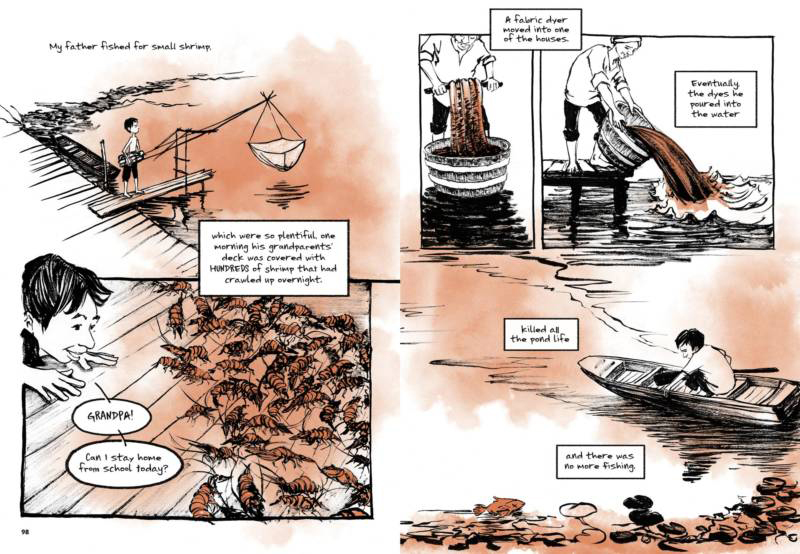
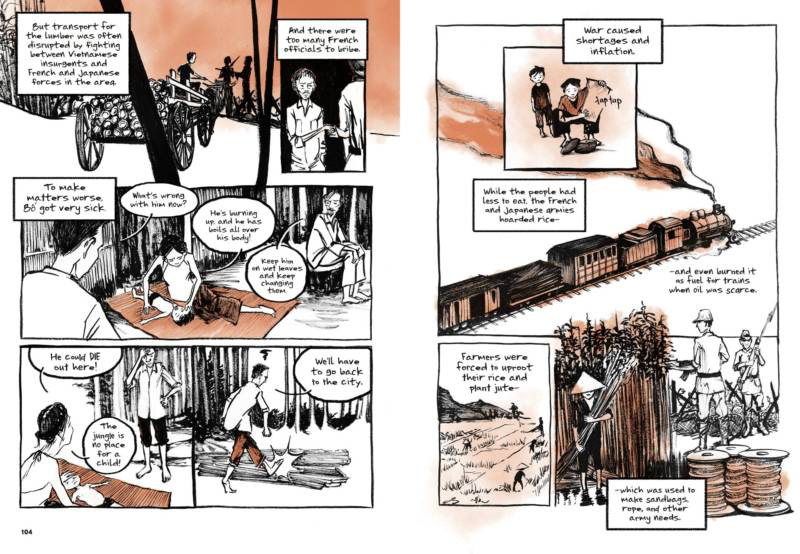
Top image courtesy of Oksana Manych/Unsplash.
Want to keep up with our book-related adventures? Sign up for our newsletter!
Can you help us? If you like this article, share it your friends!
Strong Sense of Place is a website and podcast dedicated to literary travel and books we love. Reading good books increases empathy. Empathy is good for all of us and the amazing world we inhabit.
Strong Sense of Place is a listener-supported podcast. If you like the work we do, you can help make it happen by joining our Patreon! That'll unlock bonus content for you, too — including Mel's secret book reviews and Dave's behind-the-scenes notes for the latest Two Truths and a Lie.
Join our Substack to get our FREE newsletter with podcast updates and behind-the-scenes info — and join in fun chats about books and travel with other lovely readers.

We'll share enough detail to help you decide if a book is for you, but we'll never ruin plot twists or give away the ending.
Content on this site is ©2025 by Smudge Publishing, unless otherwise noted. Peace be with you, person who reads the small type.